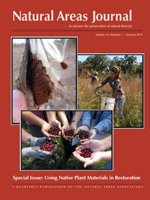The pace of habitat destruction and loss of biological diversity globally exceeds the current capacity of societies to restore functioning ecosystems. Working with prison systems to engage inmates in habitat conservation and ecological science is an innovative approach to increase our ability to reestablish habitat and at-risk species, while simultaneously providing people in custody with opportunities for reciprocal restoration, education, therapeutic activities, safer conditions, and lower costs of imprisonment. We present the benefits of working with prisons to conduct habitat conservation through nursery production of plants and captive rearing of animals, combined with educational experiences, and provide an overview of the Sustainability in Prisons Project Network. Examples of projects with prisons in Washington and Oregon include nursery production of Wyoming big sagebrush (Artemisia tridentata Nutt. ssp. wyomingensis) for restoring habitat of the greater sage-grouse (Centrocercus urophasianus), nursery production of early blue violet (Viola adunca) to support conservation of threatened Oregon silverspot butterflies (Speyeria zerene hippolyta), captive rearing programs for Oregon spotted frogs (Rana pretiosa) and endangered Taylor's checkerspot butterflies (Euphydryas editha taylori), and nursery production of over 60 plant species for restoration of native prairies. Including incarcerated people in conservation and science could tap into the positive potential of over 2 million inmates at over 4000 prisons and jails in the United States and create new partnerships to support large-scale habitat restoration and ecological research.
How to translate text using browser tools
1 January 2015
Conservation Projects in Prison: The Case for Engaging Incarcerated Populations in Conservation and Science
Thomas N. Kaye,
Kelli Bush,
Chad Naugle,
Carri J. LeRoy

Natural Areas Journal
Vol. 35 • No. 1
Jan 2015
Vol. 35 • No. 1
Jan 2015
captive rearing
sagebrush
sage-grouse
sustainability in prisons project
Taylor's checkerspot




